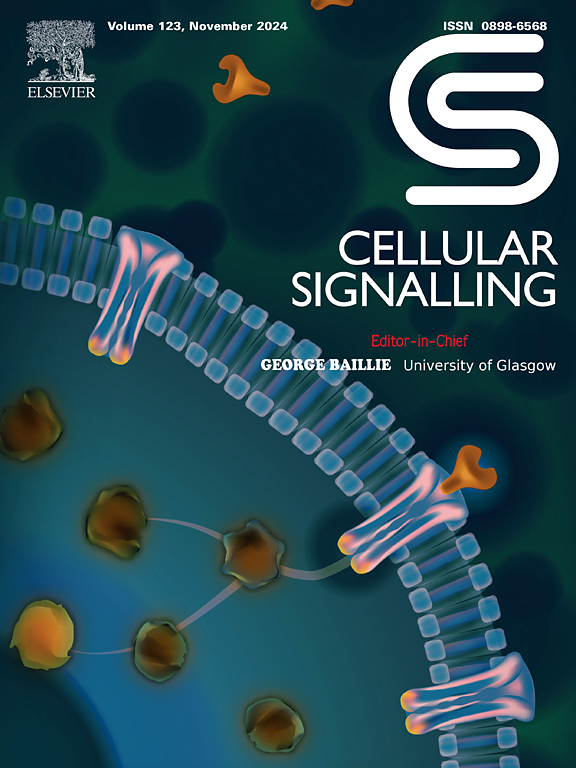HBV upregulates TNNT1 expression through PI3K/AKT/mTOR-c-Myc axis, which in turn induces EMT and liver fibrosis in mice
IF 4.4
2区 生物学
Q2 CELL BIOLOGY
引用次数: 0
Abstract
Hepatitis B virus (HBV) infection is a major etiological factor in the development of hepatocellular carcinoma (HCC). Despite extensive research efforts, the precise molecular mechanisms and critical host factors driving HBV-induced epithelial-mesenchymal transition (EMT), liver fibrosis and hepatocarcinogenesis remain to be explored. Emerging evidence has identified aberrant expression of Troponin T1 (TNNT1) in malignancies, implicating its potential role in HCC progression. However, the specific role and mechanism of TNNT1 in HBV-associated HCC remain elusive. In this study, we demonstrate that TNNT1 expression is markedly upregulated in HBV-positive HCC tissues, HBV infection/replication cell models and AAV-HBV1.3-infected mouse models. Mechanistically, HBV activates the transcription factor c-Myc via the PI3K/AKT/mTOR signaling pathway. HBV promotes HCC cell proliferation and EMT markers (Cyclin D1, Vimentin increased, E-cadherin decreased) and liver fibrosis marker α-smooth muscle actin (α-SMA) expression in a TNNT1-dependent manner. HBV infection-induced EMT and liver fibrosis can be abolished by hepatic-specific TNNT1 knockout or knockdown in mice. These findings provide novel insights into the role of TNNT1 in HBV-driven EMT and liver fibrosis, and establish a foundation for further exploration of TNNT1 as a potential therapeutic target in HBV-associated HCC progress.
HBV通过PI3K/AKT/mTOR-c-Myc轴上调TNNT1表达,进而诱导小鼠EMT和肝纤维化。
乙型肝炎病毒(HBV)感染是肝细胞癌(HCC)发展的主要病因。尽管进行了大量的研究,但驱动hbv诱导的上皮-间质转化(EMT)、肝纤维化和肝癌发生的精确分子机制和关键宿主因子仍有待探索。新出现的证据已经确定了肌钙蛋白T1 (TNNT1)在恶性肿瘤中的异常表达,暗示其在HCC进展中的潜在作用。然而,TNNT1在hbv相关HCC中的具体作用和机制尚不清楚。在本研究中,我们证明TNNT1在HBV阳性的HCC组织、HBV感染/复制细胞模型和aav - hbv1.3感染小鼠模型中表达显著上调。从机制上讲,HBV通过PI3K/AKT/mTOR信号通路激活转录因子c-Myc。HBV以依赖tnnt1的方式促进HCC细胞增殖和EMT标志物(Cyclin D1、Vimentin升高,E-cadherin降低)和肝纤维化标志物α-平滑肌肌动蛋白(α-SMA)的表达。HBV感染诱导的EMT和肝纤维化可以通过小鼠肝脏特异性TNNT1敲除或敲低来消除。这些发现为TNNT1在hbv驱动的EMT和肝纤维化中的作用提供了新的见解,并为进一步探索TNNT1作为hbv相关HCC进展的潜在治疗靶点奠定了基础。
本文章由计算机程序翻译,如有差异,请以英文原文为准。
求助全文
约1分钟内获得全文
求助全文
来源期刊

Cellular signalling
生物-细胞生物学
CiteScore
8.40
自引率
0.00%
发文量
250
审稿时长
27 days
期刊介绍:
Cellular Signalling publishes original research describing fundamental and clinical findings on the mechanisms, actions and structural components of cellular signalling systems in vitro and in vivo.
Cellular Signalling aims at full length research papers defining signalling systems ranging from microorganisms to cells, tissues and higher organisms.
 求助内容:
求助内容: 应助结果提醒方式:
应助结果提醒方式:


